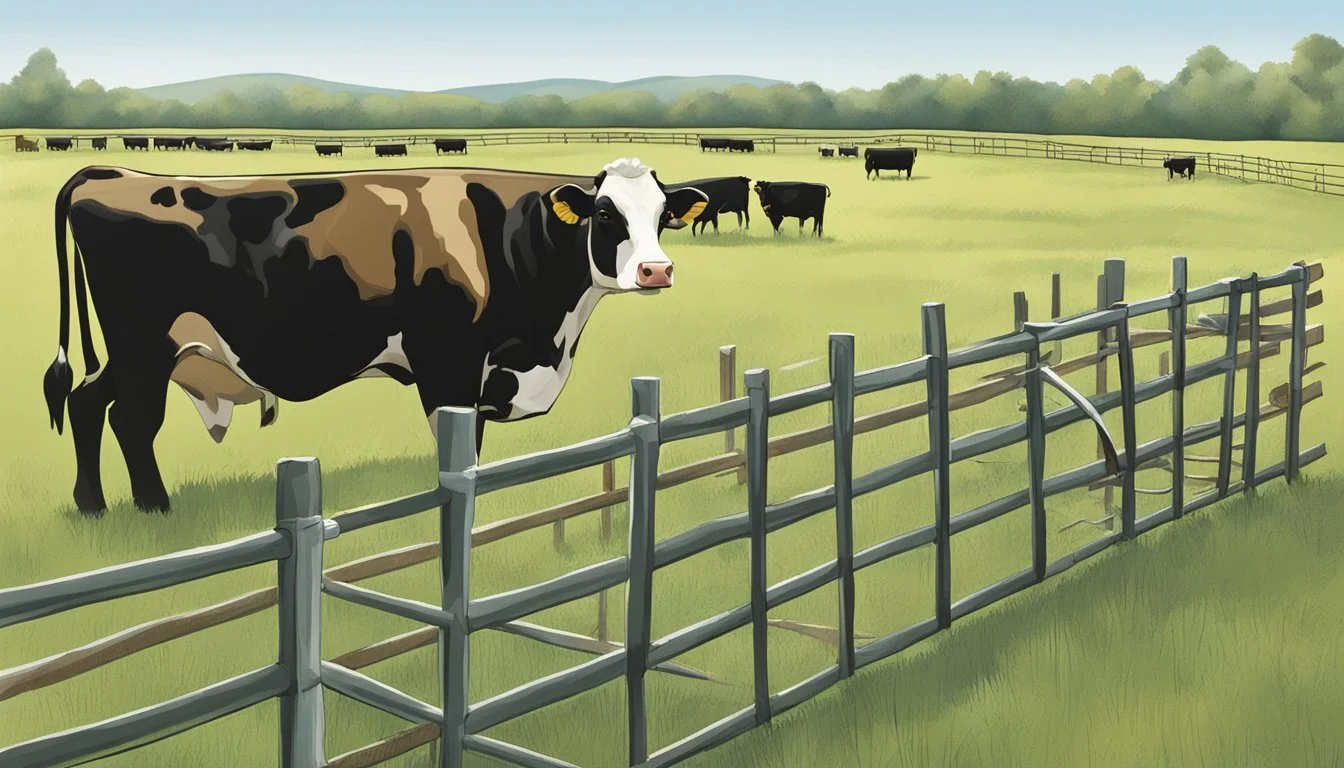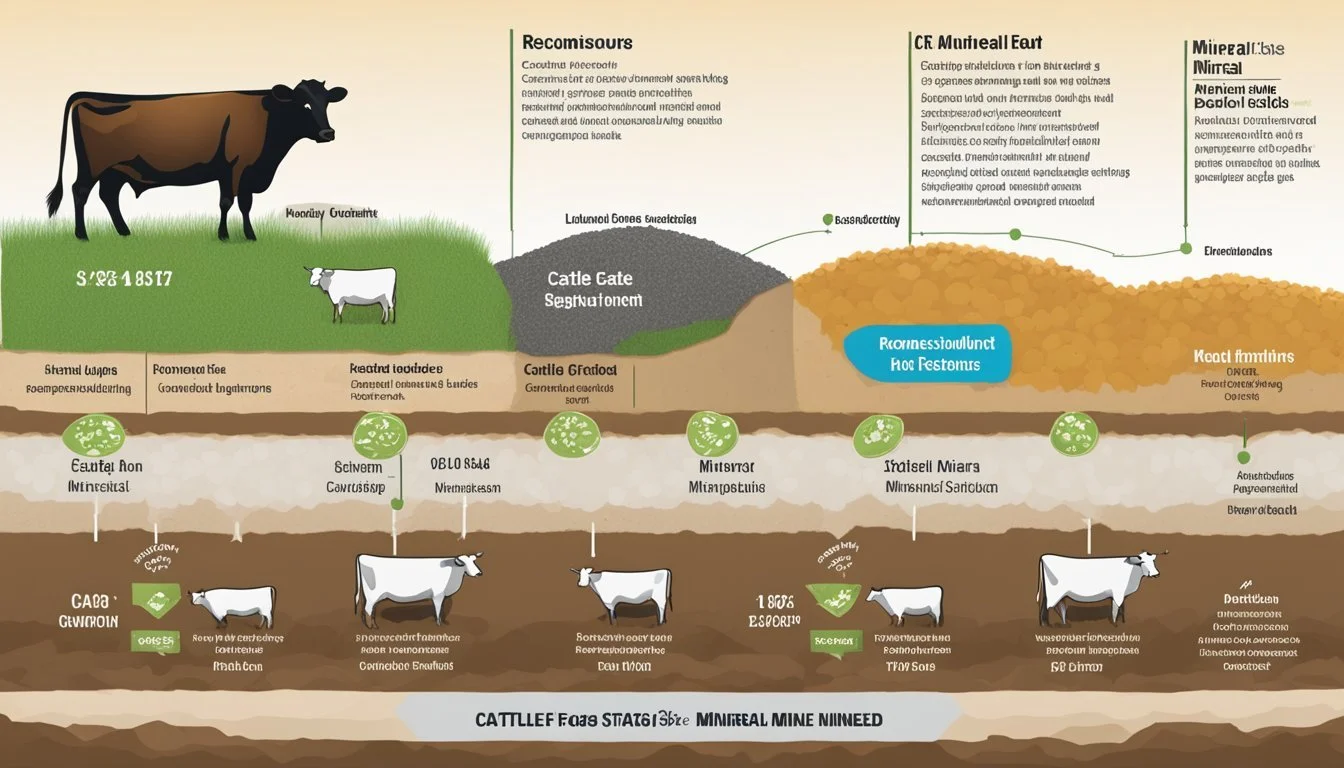How do I Supplement Minerals for My Cattle
Essential Strategies for Optimal Health
Supplementing minerals for cattle is a critical component of livestock management that ensures the health and productivity of the herd. Essential minerals such as calcium, phosphorus, and salt are necessary for various biological processes including growth, reproduction, and lactation. Cattle farmers must assess the mineral requirements of their herd and match them with the appropriate supplementation strategies to guard against deficiencies that can lead to poor animal performance.
Mineral supplements come in various forms, including blocks, loose free-choice minerals, and those designed for mixing in feed. Each method has its specific applications and benefits, but they all aim to meet the mineral nutrition needs of cattle. For instance, loose free-choice minerals allow cattle to consume as needed, while mineral blocks offer a more controlled intake over a longer duration.
When considering mineral supplementation, it’s crucial to understand not only the basic requirements but also how the balance of minerals affects absorption and utilization in cattle. The right mineral supplementation strategies can help maintain optimal herd health, support efficient growth and reproduction, and ultimately contribute to the financial bottom line of the farming operation.
Understanding Cattle Mineral Requirements
Minerals are essential to cattle health, influencing growth, reproduction, and immune system function. An effective supplementation program is critical for preventing deficiencies and promoting optimal animal performance.
Macro vs. Micro Minerals
Macro minerals such as calcium, phosphorus, magnesium, potassium, sulfur, sodium, and chlorine are required in larger quantities compared to micro minerals. Animals typically receive macro minerals through grass, forages, grains, and other feedstuffs. However, the precise amounts can vary widely depending on the mineral content of the soil in which the plant grows. Mineral Supplements for Beef Cattle should include a balanced ratio of calcium to phosphorus, typically around 1.5:1, but satisfactory ranges can vary from 1:1 to 4:1.
Trace minerals, including iron, manganese, copper, zinc, cobalt, iodine, selenium, and molybdenum, are needed in smaller amounts but are no less crucial to health. These minerals play diverse roles from oxygen transportation to enzyme functions and are commonly found in various supplements tailored to specific cattle needs.
Identifying Mineral Deficiencies in Cattle
Mineral deficiencies in cattle can manifest in several ways, from poor growth rates to issues with fertility and reproduction. For example, a deficiency in selenium may lead to white muscle disease, while a lack of phosphorus can contribute to reduced appetite, poor weight gain, and reproductive issues. Mineral Supplements for Beef Cattle provides information on typical symptoms associated with deficiencies in cattle.
Role of Minerals in Cattle Health
Minerals play various roles in cattle health: calcium and phosphorus are vital for strong bones and teeth; magnesium is essential for muscle and nervous system function; and trace minerals such as copper and zinc are involved in carbohydrate metabolism and immune function. Managing mineral intake is crucial, especially for pregnant or lactating females, to support reproductive performance and lactation.
Factors Affecting Mineral Intake
Several factors influence cattle's mineral intake, including the bioavailability of minerals in feeds, the mineral content of water, interactions with other minerals, and the physiological state of the animal. For example, lush forage might lead to lower magnesium intake, increasing the risk of grass tetany. Moreover, the mineral content in pasture can vary seasonally, affecting intake rates. When considering Minerals for Beef Cattle, it is important to select a mineral supplement that compensates for these variations to maintain consistent mineral intake.
Practical Aspects of Mineral Supplementation
When considering mineral supplementation for cattle, it's crucial to select appropriate minerals based on specific dietary needs and to apply them in the correct manner and frequency.
Choosing the Right Mineral Supplement
Selecting the right mineral supplement necessitates a careful evaluation of the minerals present in the cattle's current diet. For beef cattle or dairy cattle, the ratio of calcium to phosphorus should generally be 2:1, ensuring both minerals are provided at optimal levels for reproductive efficiency and milk production. Moreover, the bioavailability of minerals, which refers to how well minerals are absorbed and utilized by cattle, is integral for effective mineral nutrition.
Methods of Mineral Supplementation
Mineral supplements can be introduced to cattle through various methods such as free-choice mineral feeders, mineral blocks, or mixed into the feed. Trace mineralized salt can also be included to provide smaller quantities of essential minerals. It's essential to position mineral feeders in areas easily accessible to the cattle to ensure consistent mineral intake.
Mineral Supplementation Frequency and Dosage
The frequency and dosage of mineral supplementation rely heavily on factors like dry matter intake, the nutritional content of grasses and concentrates, as well as overall energy demands of the cattle. It might be necessary to adjust dosages to counteract specific deficiencies, such as adding magnesium to prevent grass tetany during periods when mineral levels in grasses are low.
Adjusting Supplements to the Diet and Environment
Supplemental minerals must be adjusted based on dietary components like silage, cottonseed meal, wheat, and corn, which vary in mineral content. Additionally, environmental conditions play a critical role. For example, cattle require more energy in the form of fat, protein, and carbohydrates during cold weather, impacting the overall mineral nutrition strategy.
Monitoring and Adjusting Mineral Supplementation
Continuous monitoring of cattle health and growth rates is necessary to assess the effectiveness of the mineral supplementation program. Regularly checking mineral feeder use and evaluating mineral tags can help determine if the cattle are receiving proper mineral nutrition to support optimal growth, appetite, and overall health. Adjustments should be made in response to observed deficiencies or excesses.
Safety and Toxicity Considerations
When supplementing minerals for cattle, it is crucial to balance the requirements without causing toxicity. Proper understanding and management of mineral supplementation are essential for optimal animal health and productivity.
Understanding Mineral Toxicity and Interactions
Mineral toxicity occurs when cattle ingest excessive amounts of minerals. Specific minerals such as copper, selenium, and molybdenum can be particularly dangerous when their intake surpasses the animals' physiological needs. For instance, cattle can experience copper toxicity if diets with high copper levels are not balanced with appropriate amounts of molybdenum and sulfur, which can mitigate absorption. Similarly, an excess of selenium could lead to stiffness, lameness, or even death. Interactions between minerals like calcium and phosphorus have to be carefully considered as well, as imbalances can disrupt their utilization and lead to issues such as urinary calculi.
Managing Over-Supplementation Risks
To manage the risks of over-supplementation, a structured mineral program should be adopted. Begin with a forage analysis to determine existing mineral content before supplementation. Utilize magnesium oxide cautiously, as overdose could result in toxicity, though it's less common. For calcium supplementation, consider the existing levels in the feed and maintain the appropriate calcium to phosphorus ratio, typically around 1.5:1. Implementing supplementation based on age, weight, and physiological needs—such as growth, pregnancy, or lactation—helps prevent inadvertent over-supplementation. Regularly evaluate the cattle for signs of both deficiency and toxicity, such as growth rate changes, enzyme function, bone development issues, and discoloration of coat synonymous with copper deficiency.
Regulations and Standards for Mineral Supplementation
When supplementing minerals for cattle, it is essential to adhere to the standards and regulations set forth by the Food and Drug Administration (FDA). The FDA provides guidelines to ensure livestock receive appropriate mineral nutrition vital for their health and productivity.
The mineral supplements for cattle should meet specific nutritional requirements, including essential elements like calcium, phosphorus, and necessary vitamins such as A, D, and E. The optimal Ca
ratio for cattle should be about 1.5:1, with an acceptable range from 1:1 to 4:1 to support proper nervous and muscular functions.
Producers must ensure that the mineral supplement chosen:
Is appropriate for the age, breed, and stage of production of the cattle
Contains elements at levels that align with the FDA's recommended dietary allowances
Does not exceed maximum permitted levels to prevent toxicity
Additionally, animal health is contingent on more than just calcium and phosphorus; trace minerals and vitamins should be balanced. It is important to remember that while vitamins A, D, and E are crucial supplements for beef cattle, their requirements can often be met with adequate exposure to sunlight and a diet including fresh, green forage.
Labeling of mineral supplements must provide clear information on the constituent minerals and their concentration. This transparency allows producers to make informed decisions when selecting a product that is compliant with regulation and beneficial for their cattle's nutritional needs.
Future Directions in Mineral Supplementation
Exploring the future of mineral supplementation for cattle involves a multi-faceted approach that includes innovations in mineral nutrition, a focus on cutting-edge research, and sustainable practices in the industry. These emerging trends aim to enhance animal health, optimize growth and reproductive performance, and mitigate environmental impact.
Innovations in Mineral Nutrition
Recent advancements have led to more precise formulations in mineral programs for cattle, driven by a deeper understanding of mineral interactions and bioavailability. For instance, hydroxy trace minerals, more bioavailable forms of essential minerals such as copper, zinc, and manganese, are being integrated into feedstuffs. These innovations offer the potential for improved immune system function and reproductive efficiency, which is vital for livestock productivity.
Research Trends and Emerging Knowledge
Current research in mineral supplementation is defining optimal ratios of vitamins to minerals and seeking ways to enhance the nutritional efficacy of supplements. Investigations into the genomic influence on mineral utilization could lead to personalized mineral programs tailored specifically for individual cattle or breeds, maximizing their health and productivity.
Sustainable Practices in Mineral Use
Sustainability in mineral supplementation reflects a responsibility toward both animal welfare and the environment. Researchers are emphasizing the need to balance livestock nutrition with pasture management to ensure long-term viability. Additionally, there is increased attention on reducing excess mineral excretion, which can negatively impact the environment, through precision supplementation strategies. The goal is streamlined supplementation, which encompasses the welfare of the cattle and the health of the planet.





